Most Beautiful Ottoman Villages in Turkey
After 600 years of rule by the Ottoman Empire, countless historical monuments have survived to the present day. In the early Ottoman period, the emphasis was primarily on religious architecture, while civil architecture began to come to the fore from the 18th century onwards. During this period, examples of civil architecture such as houses, mansions, and public residences became widespread. Today, one can still see both mosques, which are important examples of religious architecture, and civil structures built by the public and rulers for housing purposes. These works not only reflect the architectural characteristics of the period in which they were built but also bear the cultural and geographical traces of the region in which they are located. So, what are the best Ottoman villages in Turkey? Where are the Ottoman villages in Turkey? Let's take a look at the most beautiful spots in Turkey that bear the traces of Ottoman architecture!
Safranbolu - Karabuk
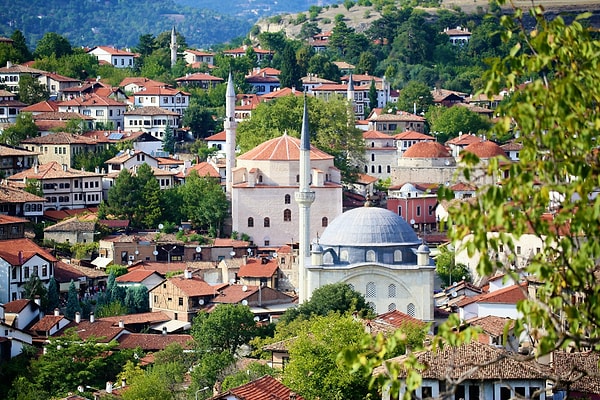
Safranbolu, the favourite of the Western Black Sea region, stands out with its historical texture and first began to exhibit Ottoman influences in 1423. Mehmed Pasha Mosque, the Clock Tower, and the İncekaya Aqueduct, constructed by Safranbolu Grand Vizier İzzet Mehmed Pasha during the reign of Selim III, are among the notable works of this period. Approximately 2000 houses and mansions built between the 18th and 20th centuries can be found here. In the nearby Yörük Village, the most striking examples of Ottoman civil architecture can be seen. The strong family ties and extended family structure of the period are reflected in the house plans: the houses, which are typically two or one-storey, feature haremlik-selamlik separation, courtyards, and barn sections. These houses, which use stone on the lower floors and wood on the upper floors, predominantly distinguished by their bay windows, reflect the elegance of Ottoman architecture.
Birgi - Izmir
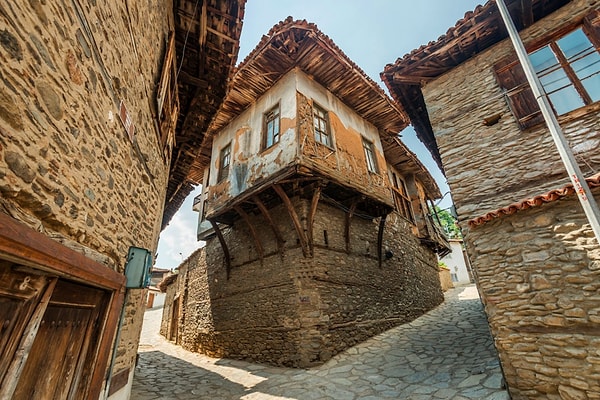
Birgi, connected to the Ödemiş district of İzmir, boasts a deep-rooted history dating back to 2000 BC. The local architecture, which started to take shape during the Aydinogullari Principality, developed with various styles during the Ottoman period and has reached the present day. Both religious buildings and mansions bear the traces of this period. Notably, Çakırağa Mansion and Sandıkoğlu Mansion are among the most remarkable examples of Birgi's civil architectural heritage. The interior and exterior façades of the mansions are artistically decorated, and landscape paintings adorn the main rooms and some sections. The colours and styles used reflect the common style of the artists who embellished these works.
Source: İzmirin Renkleri
Cumalıkızık - Bursa

Following the Ottoman conquest of Bursa, construction and settlement activities commenced; Cumalıkızık stands out as one of the first foundation villages established. The houses in this village, which draw attention with their unique style, captivate visitors with their authentic two- or three-storey structures. Of the 270 houses with a history of approximately 300 years, 180 remain in active use today. These buildings, shaped by Ottoman aesthetics, carry historical details in both their interior and exterior spaces. With their courtyard structures, balconies featuring bay windows, and hipped roof designs, they present a harmonious, warm, and inviting image.
Taraklı - Sakarya

Taraklı, one of the prized districts of Sakarya, is notable for its architectural texture that preserves the Ottoman tradition. Civil buildings similar to those in Safranbolu can also be found here. Once a village, Taraklı has now become a district. While some houses have succumbed to the passage of time, many are being revitalised through restoration. These two- or three-storey houses are aligned along cobblestone streets, positioned in harmony with one another. The most significant example of Ottoman religious architecture in Taraklı is the Yunus Pasha Mosque, built in 1517, also known as the “Kurşunlu Mosque” due to its lead dome. Additionally, there are attractions such as the Historical Turkish Bath and Hisar Hill worth visiting.
Sığacık - Izmir
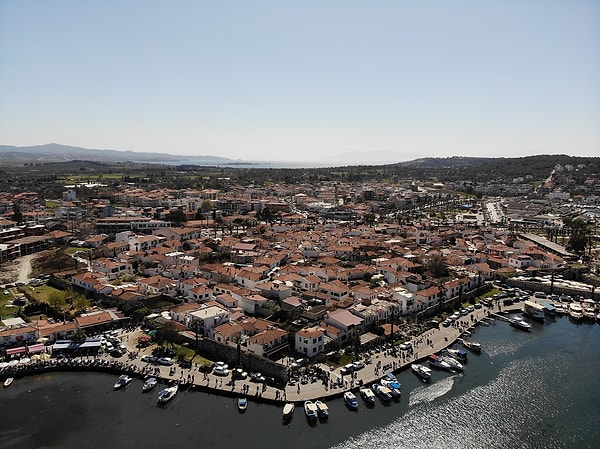
Sığacık, which is part of the Seferihisar district of İzmir, is a peaceful fishing town distinguished by its historical texture and natural beauty. It is a favourite choice for those seeking a tranquil escape by the sea, surrounded by nature. On the streets of Kaleiçi, single or two-storey houses that harmoniously incorporate wood and stone invite attention. Today, these buildings have largely been converted into boutique hotels or shops selling local products. The foundations of Sığacık Castle date back to the reign of Suleiman the Magnificent. The utilisation of stones from the ancient city of Teos in the castle's construction further emphasises the historical richness of the region.
Adatepe Village - Çanakkale
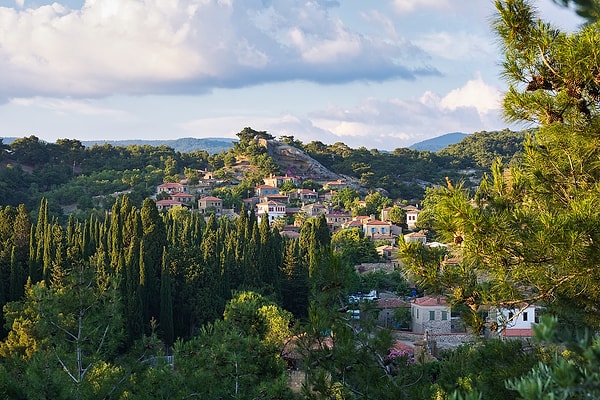
Adatepe Village, situated in the foothills of the Kaz Mountains, is one of Çanakkale's tourism towns that has only recently gained appreciation. The village's history dates back to the Seljuk period, and during the Ottoman period, it transformed into a cultural mosaic where Turkish and Greek people coexisted in harmony. Before 1980, the village, in a state of disrepair, was rediscovered and restored by a group of writers, revitalising it while preserving its historical texture. Today, around 100 houses have been restored to their original designs and brought back to life. The extensive use of stone and brick, along with colourful framed double-hung windows and the village's quiet lanes, imparts Adatepe a warm, welcoming, and natural atmosphere.
Şirince - Izmir

Şirince, located in the Selçuk district, is a village where both Greek and Turkish people cohabited in the late Ottoman period, maintaining its historical texture. It is renowned for its stone streets, bay windows, whitewashed houses, and vineyards. Most of the houses exemplify Ottoman civil architecture with high ceilings, wooden joinery, and courtyards. Historical buildings in the village, such as the Church of St. John the Baptist, illuminate the multicultural past of the region. Today, many houses have been restored as boutique hotels or pensions.
Mustafapaşa (formerly Sinasos) - Nevsehir

Mustafapaşa Village, one of the favourite settlements of Cappadocia, was one of the important settlements where Greeks and Turks lived together during the Ottoman period. The houses, which stand out with their stone workmanship, have large courtyards, decorated entrance doors and stone staircases. The Monastery of St. Nicholas, the Church of St. Vasilios and the Mehmet Şakir Pasha Madrasah are beautiful examples of religious and civil architecture. The village combines Ottoman stone architecture with the natural structure of Cappadocia.
Göynük - Bolu
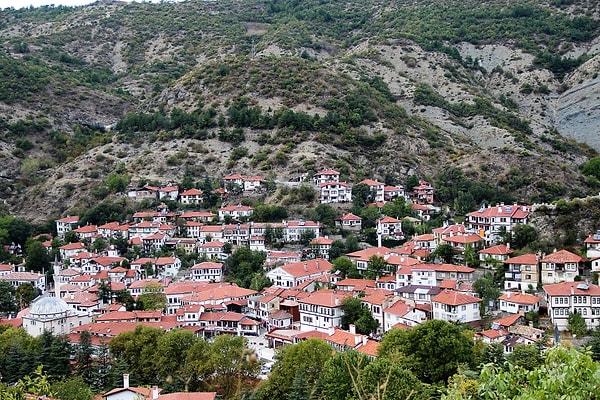
Göynük, the historical district of Bolu, stands out with its civil architecture examples from the Ottoman period. It looks like an Ottoman town with its two-storey, bay windows, wooden, detailed houses and stone streets. Stone is used on the facades of the houses, and wood is used on the upper floors. The Victory Tower, Akşemseddin Tomb and various mosques in Göynük are examples of religious architecture. It has a preserved Ottoman texture similar to Safranbolu and Taraklı.
Mudurnu - Bolu

Mudurnu, known for its Ottoman-era mansions, mosques and the ahi tradition, is an important settlement that carries its historical identity to the present day. The houses, which are a mixture of wood and stone, are usually two or three storeys and contain sections reflecting the traditional family structure. Buildings such as Yıldırım Bayezid Mosque, Suleiman the Magnificent Bath and Armutçular Mansion are beautiful examples of religious and civil architecture. It is one of the cities declared as “Living History” by UNESCO.
Keşfet ile ziyaret ettiğin tüm kategorileri tek akışta gör!

Send Comment